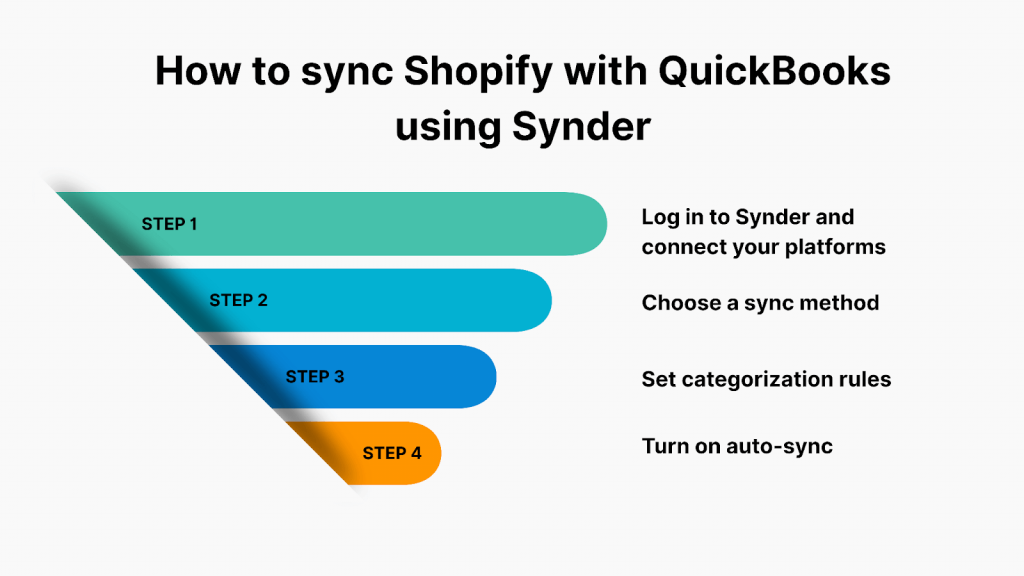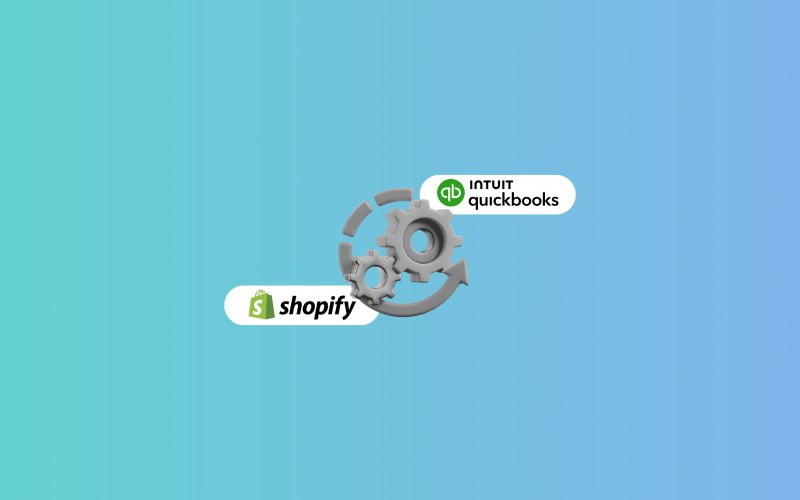Integrating Shopify with QuickBooks Online can save you hours of manual work even when it works correctly. But many users run into problems with the native integration, from missing sales data to failed reconciliations. This article breaks down the most common sync issues and shows how software like Synder can help you connect Shopify, payment processors, and QuickBooks Online in one smooth workflow.
What can go wrong: Common Shopify QuickBooks Online sync issues
The built-in integration between Shopify and QuickBooks Online is convenient but often limited. Here are some of the issues businesses run into most often:
1. Missing transactions
Sales processed through certain gateways, like PayPal or Stripe, don’t always make it into QuickBooks. This leaves your revenue numbers incomplete and can lead to reporting errors down the line.
2. Duplicate entries
If you’re using multiple apps or syncing both sales and payouts, you might see the same transaction show up more than once. This causes confusion and slows down your month-end close.
3. Reconciliation problems
One of the biggest complaints is that Shopify payouts don’t always match up correctly in QuickBooks. That makes bank reconciliation harder than it needs to be and increases the risk of mistakes.
A better alternative: Why businesses use Synder
If you’re looking for a more reliable way to connect Shopify and QuickBooks, Synder offers an advanced approach. It helps you manage the entire flow from checkout to reconciliation, including transactions from third-party payment providers.
Synder is especially useful if you:
- Use multiple payment gateways or other sales channels or payment gateway (like eBay, Amazon, PayPal, and over 30 others)
- Want to avoid duplicates or missing entries
- Need cleaner bank reconciliations
- Work with multiple currencies
- Want control over how transactions are categorized in QuickBooks
It also lets you choose between syncing individual transactions or daily summaries, depending on how much detail you want in your books.
Check it out yourself during Synder’s 15-day free trial or get answers to all your questions live during our 1-1 demo.
Step-by-step: How to sync Shopify with QuickBooks using Synder
Here’s how to set up Synder for smooth syncing between Shopify and QuickBooks Online:

Step 1. Log in to Synder and connect your platforms
Sign up and connect both Shopify and QuickBooks Online to your Synder workspace. Add any additional platforms you use for payments (Stripe, PayPal, Square, etc.) so everything is captured in one place.
Step 2. Choose a sync method
Pick between Per Transaction Sync (for detailed records) or Summary Sync (for high-volume reporting).
Step 3. Set categorization rules
Use Synder’s Smart Rules to control how transactions are categorized in QuickBooks: income accounts, tax codes, classes, and more.
Step 4. Turn on auto-sync
Let Synder automatically bring in and post new transactions as they happen, reducing manual work.
In addition to up to date syncing and flexible categorization, Synder also helps streamline reconciliation by automatically matching Shopify payouts with the corresponding bank deposits in QuickBooks Online. This eliminates the need for manual tracking and makes it much easier to close your books accurately.
FAQ
Why are some of my Shopify transactions missing in QuickBooks Online?
It usually happens when payment platforms like PayPal or Stripe aren’t connected. Synder brings in all transactions across your setup to keep records complete.
How do I avoid duplicate entries?
By connecting everything through one tool like Synder, you prevent overlap between apps and stop duplicates at the source.
Can I control how transactions are categorized?
Yes. Synder lets you apply rules to classify transactions by account, tax, location, or customer type, tailored to your setup in QuickBooks.
Can I sync past Shopify transactions?
Yes. Synder supports historical syncs. You can pull in previous transactions to fill any gaps in your books.
Can Synder sync Shopify, PayPal, and QuickBooks Online together?
Yes. Synder is designed to sync data across platforms, so your sales, payments, and accounting systems all stay aligned.






